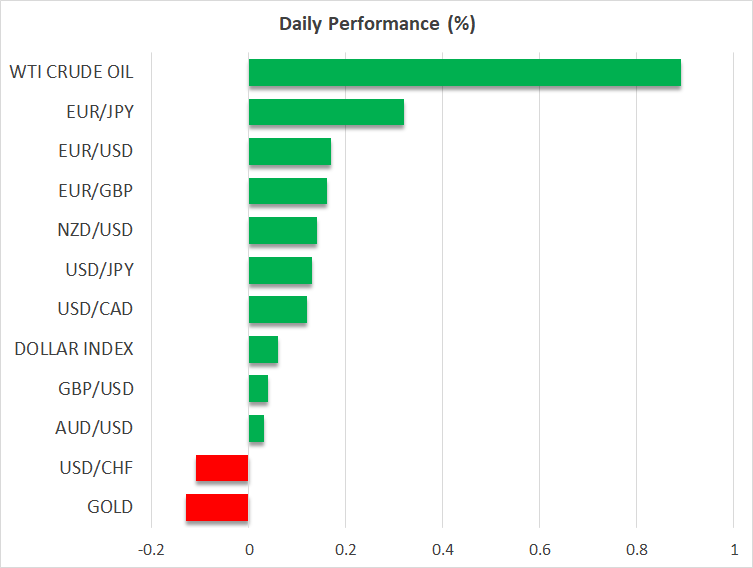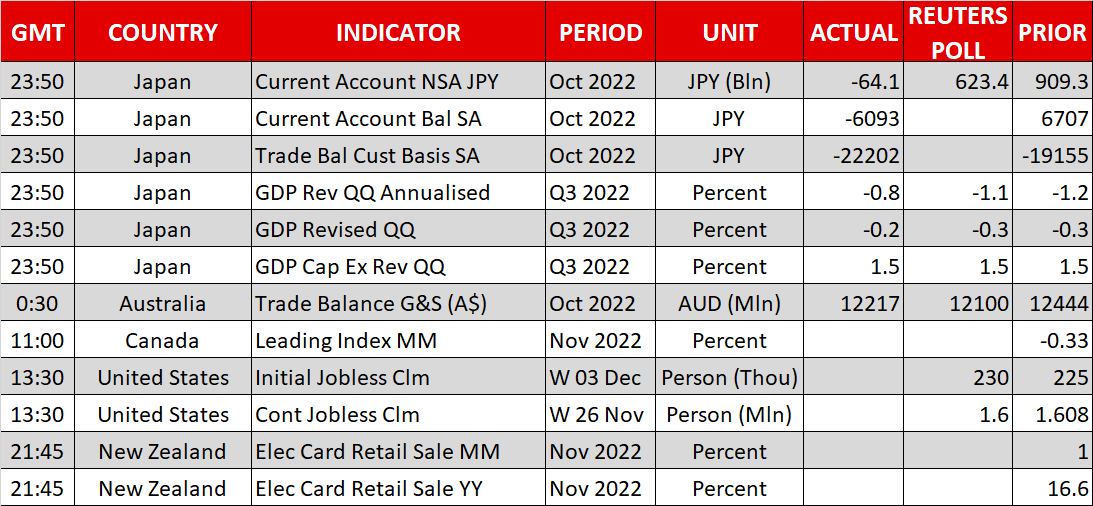- Sharp (OTC:SHCAY) decline in US yields saps the dollar, breathes new life into gold
- Oil hits new lows as recession worries mount, despite China reopening
- Canadian dollar cannot capitalize on surprisingly large rate hike

Give me shelter
Investors have started to play defense. There’s a distinct sense that the main threat next year will be slow or negative economic growth, replacing inflation as public enemy number one. This has induced a quiet flight to safety in financial markets as traders attempt to frontrun the next big theme.
The bond market has been at the epicenter of this shift. A sharp decline in Treasury yields and a deepening inversion across the yield curve suggest that recession risks have started to overshadow inflation in the eyes of investors, something corroborated by a range of leading economic indicators and the latest breakdown in oil prices.
Yields are essentially the price of money, so any sudden moves can have powerful domino effects on other assets. In this case, the slide in yields dealt a blow to the US dollar by eroding its interest rate advantage against other currencies, but it also breathed life back into gold.
Gold has started to shine once more, capitalizing on a perfect storm of falling yields, the pullback in the dollar, China’s central bank raising its reserves, and speculation among top strategists that Russia might start selling its oil in exchange for gold. The wildcard is what happens with inflation and the Fed next week, but looking into next year, there’s scope for a comeback in bullion as growth risks dominate and central banks conclude their tightening cycles.
Oil breaks down, stocks drift
Doctor crude has given an ominous diagnosis of the world economy, with the latest breakdown in oil prices signaling deteriorating prospects for demand. Crude prices have now erased the entire rally of this year and are trading lower, even despite the steady dismantling of covid controls in
China and steps from OPEC to restrain supply.
In the equity arena, the major indices on Wall Street retreated, albeit not by much. The decline in yields reflexively helped to blunt the impact of the broader rush to safety, limiting the losses. Falling yields are generally considered beneficial for stocks, as valuations based on future profits are discounted more favorably as yields edge lower.
Even so, the risk-to-reward profile for equities is not attractive here. Valuations are still expensive by historical standards as the S&P 500 is trading above 17 times next year’s estimated earnings, which are themselves vulnerable to negative revisions based on what leading indicators suggest about the global economy’s fortunes. The rejection from the year-long downtrend line in the S&P 500 might have signified the end of this relief rally.
BoC raises rates, China relaxes restrictions
Over in Canada, the central bank raised interest rates by 50 basis points yesterday, exceeding market expectations. The loonie spiked higher in response, but surrendered its gains fairly quickly to trade lower as investors placed greater emphasis on the signal that this rate hike might have been the final move in this cycle. Sliding oil prices played their role too, helping to push the currency lower.
Elsewhere, Chinese authorities continued to relax covid control measures, for instance by scrapping requirements for negative tests in many public venues and loosening movement restrictions. The news injected some optimism into local markets, with equities in Hong Kong gaining more than 3%, extending a furious rally that has seen the index rise 33% from its October lows.
Finally, today's economic calendar is low key, without any major events to speak of. Investors will likely bide their time until tomorrow’s US producer prices data, which will shape expectations around next week’s all-important inflation report. 
